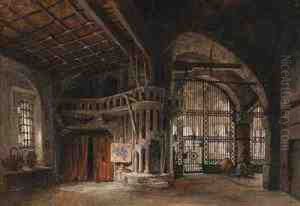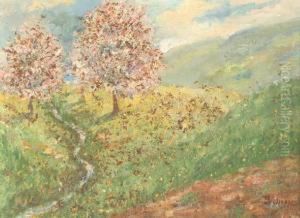Josef Schirmer Paintings
Josef Schirmer was a notable figure in the world of 19th-century European art, born in 1806 in Zittau, Saxony, and passing away in 1866 in Düsseldorf, Germany. His life and career were emblematic of the Romantic movement that swept through European art, emphasizing emotion and individualism as well as nature, which deeply influenced Schirmer's artistic focus. Schirmer initially trained under his father, who was a decorative painter, before pursuing more formal education in art. His journey led him to the Academy of Fine Arts Vienna, where he was significantly influenced by the landscapes and teachings of Joseph Anton Koch, a pivotal figure in the development of landscape painting in the 19th century.
Schirmer's move to Düsseldorf in 1839 marked a turning point in his career. There, he became a part of the Düsseldorf School of Painting, a group known for its innovative approach to landscape painting. The Düsseldorf School emphasized detail, color, and the emotional potential of landscapes, aligning well with Schirmer's interests and talents. His works often depicted idealized, meticulously detailed natural scenes, infused with a Romantic sensibility that sought to evoke an emotional response in the viewer. Schirmer was not just a painter but also a respected teacher at the Düsseldorf Art Academy, where he influenced a generation of artists with his philosophies and techniques.
Throughout his career, Josef Schirmer enjoyed considerable success and recognition. His landscapes were praised for their beauty and depth, often seen as windows to a sublime and meticulously crafted natural world. Despite the changing artistic trends over the decades, Schirmer remained dedicated to the Romantic ideals of his youth, believing in the power of art to transcend the mundane and connect with the deeper emotional and spiritual aspects of human experience. His legacy is preserved in the collections of many European art museums, where his works continue to be admired for their technical skill and emotional depth.

